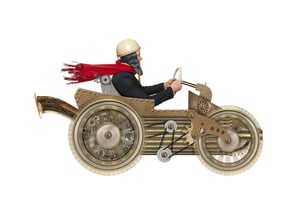3 Image Tips To Speed Up Your Website
 Images on your website are a great way to communicate with users and to show them what your business is all about. However if they aren’t properly optimised for the web, they can end up having a negative impact and making the experience for a user unbearable. On average a user will wait just 3 seconds for a page to load on desktop, so fast load times are crucial. Here are 3 image tips to speed up your website.
Images on your website are a great way to communicate with users and to show them what your business is all about. However if they aren’t properly optimised for the web, they can end up having a negative impact and making the experience for a user unbearable. On average a user will wait just 3 seconds for a page to load on desktop, so fast load times are crucial. Here are 3 image tips to speed up your website.
1: Number Of Products Per Page
If you have an ecommerce website, it’s not uncommon to have thousands of products. All of which will most likely have a thumbnail on your various product list pages. This means that page load times can go downhill fast. Test the number of products listed per page works best for your website. Set the default number that showcases a nice amount of products without sacrificing load time. You can always leave it as a customisable option for users to a certain extent, once it doesn’t hinder performance too much.
2: Check File Sizes
Web developers, marketers and business owners have a tendency to use large high resolution images across websites. While it can make the site visually appealing, it can dramatically increase load times. The same effect can often be garnered by simply compressing the image. Some sites that I have seen have images that are 4mb or even 5mb, their load times suffer and they end up losing potential customers because they don’t want to wait around for the page. Keep your image file sizes as small as you can, under 100kb wherever possible. You can adjust image resolution and scale by using a programme like Photoshop.
3: Choose The Correct File Type
The three main file types you will come across on your website are JPEG, PNG and GIF. GIF files are only suitable for smaller images like icons. PNG files should be used sparingly as their file size can sometimes be several times that of a JPEG. JPEG images offer great quality and tiny file sizes. They are suitable for most websites, especially image heavy ecommerce sites.
Speed up your website and improve user experience by testing and finding the optimal number of products to display per page, always look at your image file sizes and keep them below 100kb whenever possible and choose the correct file type for the job to avoid adding on load time for larger files. Book your web design consultation with 3B1 Media & Marketing by visiting us online today.
